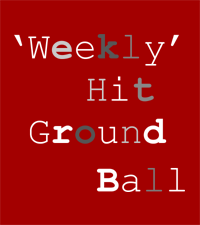 Ervin Santana had spent several months waiting for an opportunity to his liking after turning down the Kansas City Royals’ qualifying offer and becoming a free agent earlier in the offseason.
Ervin Santana had spent several months waiting for an opportunity to his liking after turning down the Kansas City Royals’ qualifying offer and becoming a free agent earlier in the offseason.
The opportunity finally came this past week, but the Atlanta Braves’ acquisition of the pitcher on a one-year deal was bittersweet for the team.
The Braves were never considered to be a contender for Santana’s signature until they were struck by a double dose of bad luck that left a gaping hole in their starting rotation.
Kris Medlen and Brandon Beachy are both booked in for appointments with Dr James Andrews on Monday and few are expecting a positive prognosis. Both have undergone Tommy John surgery on their pitching arm elbow before and both look likely to have the same procedure done again. If so, their 2014 seasons will be over before they ever got going.
On Friday evening it looked like the Oakland A’s might be in a similar position, only without a Santana to sign (nor the money to do so).
A.J. Griffin went for an MRI scan on his pitching elbow on Friday, whilst Jarrod Parker, the team’s anticipated Opening Day starter, will be jostling for a seat in Dr Andrews’ waiting room on Monday hoping that the soreness in his pitching forearm isn’t a consequence of structural damage in his elbow that would lead to him, like the two Braves’ pitchers, having his second Tommy John surgery. The early indications are that Griffin and Parker may not be quite so badly injured as first feared, although that remains to be seen.
You would think if Dr Andrews was a character in a Terry Pratchett novel he would speak in capital letters such are the ominous tones in which a visit to his Practice are talked about; however his surgical skills (and other surgeons, not least the originator of the surgery Dr Frank Jobe who passed away recently) are the reason why damage to the ulnar collateral ligament in a player’s elbow is often no longer the death of a career.
It is still a depressingly familiar tale and one that merits wider consideration.
There isn’t an obvious equivalent to Tommy John surgery in other sports, in terms of it being a common serious injury (serious in the sense of it leading to a considerable period on the sidelines). Knee ligament injuries in football would be a contender, as potentially would be concussions in sports like rugby and the NFL, yet neither really match up with the perceived prevalence of Tommy John surgery in baseball.
It makes you wonder if there is a fundamental inevitability at play. Is it simply a biological fact that the structure of a human elbow (and shoulder) doesn’t marry up well with the demands of a repeated high velocity overarm throwing action?
For all of the Tommy John surgeries that stick in the mind, the fact remains that the majority of players don’t undergo the procedure. Through a combination of factors like genetics, mechanics, strength and conditioning, playing time management and possibly a bit of luck the seeming inevitability disappears.
From the outside, the obvious question from there is just how well those above factors are understood? It would make sense that no one course of action will work perfectly for every individual. For example, a strength and conditioning regime for one person may not be ideal for another of a different physical size with different mechanics and it may change over time given the player’s age.
Tailoring a regime for an individual would involve a detailed understanding of all the factors at play coupled with a detailed understanding of the individual’s own characteristics. Clearly, that’s a lot of complicated parts to piece together into an even more complicated overall puzzle.
Teams and players do not need to be told how important health and fitness is and there appears to be a growing campaign by professionals to increase the ability to prevent injuries. It was one of the topics on the agenda at last week’s annual SABR Analytics Conference in Phoenix and Christina Kahrl’s summary on ESPN.com is well worth a read (as are her summaries of Days Two and Three in respect of the latest developments generally in the baseball research community).
In particular, it’s important to note the statement that the perception of a rise in injuries is largely due to a greater understanding of those injuries. With Tommy John surgery, for example, the underlying injury now can accurately diagnosed and the surgery and the relatively lengthy rehabilitation process are often chosen as the course to take because in most cases players can be confident that they will be able to continue to have a successful professional career as a result.
In the more general sense of the word, MLB is in a very health state right now. There have been many changes in baseball over the past 20 years and 2014 will continue the trend with the introduction of instant replay; however, whilst injuries will always be a part of sport, any work that can be done to further improve the chances of the best players being out on the field – especially reducing the number of pitchers suffering elbow injuries or at least making even greater strides in reducing the recovery period from surgery – arguably would be the most significant development of them all.


2 comments
The simple fact of the matter is that overhead throwing is an extremely unnatural activity and the forces generated at both the shoulder and elbow are astounding. The UCL is only able to withstand 61% of the valgus force applied to it at its peak stress during the over head baseball throw, if memory serves me right. Now, there are muscles on the medial (inner) aspect of the elbow that activate in order to help stabilize and support the UCL, but studies essentially show that the UCL, when isolated, can go at any point based upon forces incurred. I wholeheartedly agree, that more emphasis on injury prevention is needed. I wonder if some of these players have TJS unnecessarily, to a certain degree. At the sign of the slightest twinge, they are ready to call up Dr. Andrews, when rest and rehabilitation might actually be the best course of action…..
Unfortunately those early indications about Jarrod Parker didn’t lead to something positive. Add him to the list of pitchers that will not be playing in 2014:
http://mlb.mlb.com/news/article/mlb/as-starting-pitcher-jarrod-parker-to-undergo-tommy-john-surgery?ymd=20140317&content_id=69506900&vkey=news_mlb